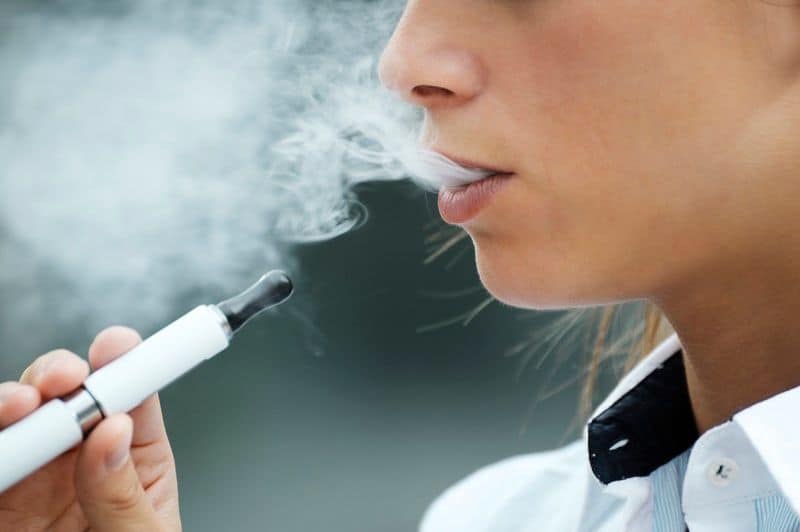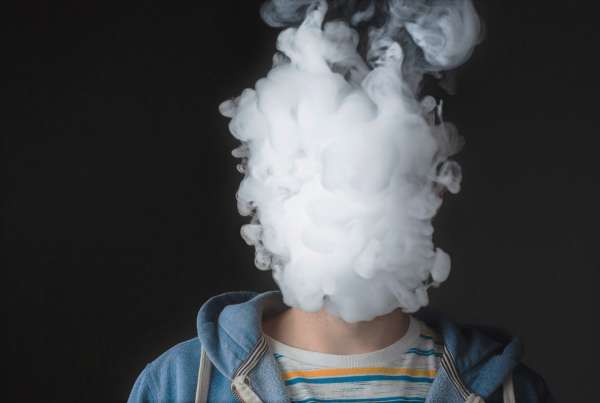You’ve probably heard of vapes and vaping at this point – sometimes also known as a reusable electronic cigarette, a vape is a separately marketed and produced reusable electronic device that heats so-called e-liquids to produce an inhalable flavored vapor, often infused with nicotine or THC (the active chemical component in cannabis). The main feature of a vape is that a large variety of e-liquids can be used in one. Some manufacturers specially design their vapes to limit usage to proprietary liquids in so-called vape pods or liquid pods. In other cases, the composition of the fluid will restrict what devices can properly heat it.
Since the industry’s inception in the early 2010s, vaping has grown dramatically. While vape companies are all over the market, the frontrunner and main culprit behind the massive growth is Juul, a brand that has also been notorious for specifically targeting teen and underage customers. But why is vaping dangerous? Well, let’s start by taking a closer look at vapes themselves, how the act of vaping affects teens, and whether vaping is detrimental or not.
What Is and Isn’t Vaping?
First off, vaping is the act of using an electronic cigarette or device that produces a plant-based vapor rather than smoke. Vapes can look like pens, cigarettes, thumb (flash) drives, or any other small, hand-held device with a mouthpiece. They can be modded (modified) with extra electronic components to increase the voltage and heating efficiency of the unit or provide longer battery life.
Cigarettes, cigars, pipes, and other smoking products rely on pulling smoke through a filter into the lungs to achieve a nicotine hit. The burned tobacco and additives can significantly damage the body, producing plaque and tar buildup in the lungs, massively increasing the risk of lung disease and heart disease, and affecting bone health, not to mention the effects of nicotine itself.
Vaping first started marketing itself as a smoking alternative because it doesn’t involve any actual smoke inhalation. But since its popularity has soared, enough data has been gathered to begin making inquiries into whether that statement is true. So far, the information we have shows that vaping isn’t without its risks. The e-liquids used in vapes are, according to marketing material, wouldn’t cause the same health problems.
All e-liquids are composed of up to about 95 percent of two base ingredients: propylene glycol and vegetable glycerin. Both of these compounds are plant-derived chemicals. According to avid vapers, these two compounds are used to produce a much more voluminous vapor than water, closer to a cigarette’s smoke without the tar. The higher the ratio of PG to VG, the heavier the “hit” on the back of the throat. The higher the percentage of VG to PG, the more vapor is produced.
Aside from the mechanics, the safety of these chemicals isn’t necessarily contested. What is contested is the safety of many additives found in vapes – mostly colorants and flavorings, used to make e-liquids smell and taste like anything from butterscotch to cola. Furthermore, many e-liquids (including those sold to teens illegally) contain active ingredients like nicotine or THC. While the nicotine levels are always advertised on the packaging, any level of nicotine is addictive (and physically harmful, especially to an underdeveloped body).
Smoking Down, Vaping Up
As vaping continues to rise in popularity, smoking cigarettes has taken a hard dip over the last few years. Many vaping proponents argue that vapes are especially useful for people who struggle with quitting smoking, as it allows them to try a less dangerous and less harmful alternative. While the science is inconclusive on whether vaping is truly less dangerous than smoking in the long term, it is clear that vaping’s most significant controversies don’t center around adults trying to quit a smoking habit but around the popularity and growth in use among children and young adults.
Do All Vapes Contain Nicotine?
E-liquids are sold both with and without nicotine, and the nicotine-containing products are labeled to inform the user how much they’d be inhaling. However, that doesn’t mean nicotine-less vaping is automatically safe – it’s just safer than vaping with nicotine. Why? For one, nicotine is a highly addictive substance. It is also a hazardous one. Long-term nicotine use can change the way the brain interprets dopamine-related signals, and causes problems with a person’s inner reward system while triggering irritability, mood swings, issues with concentration, severe withdrawal symptoms (if without nicotine for too long), and more.
Furthermore, substance use disorder at a young age (including nicotine) tends to correlate with other substances and concurrent mental health issues later in life and a tougher time getting treatment. Correlation isn’t causation – there may be other related factors that carry greater blame – but it’s a risk factor, nonetheless. Long-term nicotine use also affects the other organs, especially the heart. Heart disease remains one of the leading causes of death in the developed world, and nicotine products like tobacco are the leading preventable cause of death in the United States.
Is Vaping Itself Harmful?
While the full dangers aren’t yet clear, we do know that several minors have been diagnosed with so-called electronic cigarette or vaping use-associated lung injury (EVALI), as per the CDC. Some 3.6 million underage high school students reported vaping in 2018, a huge jump from the previous year despite age restrictions. It seems that these age groups, in particular, were vulnerable to EVALI, as most cases occurred in teens and young adults.
It’s still unknown what caused this wave of illnesses and whether vaping has any other long-term risks to consider. While there were originally many concerns regarding heavy metal inhalation, it seems now that the primary cause for EVALI among teens might be a chemical reaction or allergic reaction to specific additives in some e-liquids. Aside from lung-related symptoms, another negative effect of long-term vaping is cottonmouth, from the glycol in the vapor.
It’s also come to the attention of researchers that some flavors seem to be more dangerous than others. In general, it’s best to assume that no form of vaping is completely safe. While it’s legal, and any adult may feel free to try it, it’s both illegal and ill-advised for underage teens (and just plain ill-advised for younger adults).
Is All Vaping Addictive?
The only addictive component in some e-liquids is nicotine. While THC has a psychoactive effect, it is not addictive in the same way. It can, however, still be a dangerous compound, especially because it affects the user’s cognition and awareness and can have consequences for a user’s executive function and problem-solving with long-term use. Vaping THC also produces a more intense high than smoking marijuana. Technically, e-liquids with neither of these compounds in them are not addictive. But again, that doesn’t make them safe.
What Parents Can Do
If you suspect that your teen is vaping, it might be a good idea to sit down and talk to them. Don’t immediately reprimand them for their behavior. Maybe they picked it up from a friend and didn’t know it would be harmful. Maybe they heard it was healthier than cigarettes and figured it’d be a harmless way to look cool. Perhaps they haven’t tried e-liquids with nicotine yet, or have only recently started using nicotine. In many cases, teens become the victims of trendy marketing and slick ads.
Trying to blame them for it is underestimating the manipulative nature of vape marketing and overestimating the long-term risk assessment skills of the average teen. Continue to set a good example by not vaping or smoking yourself. If your teen has been vaping, talk to them about the negative impact and dangers of vapes, and back your statements up with facts from sources like the CDC. And if their behavior persists – to the point that they can’t quit by themselves – consider getting help together.








